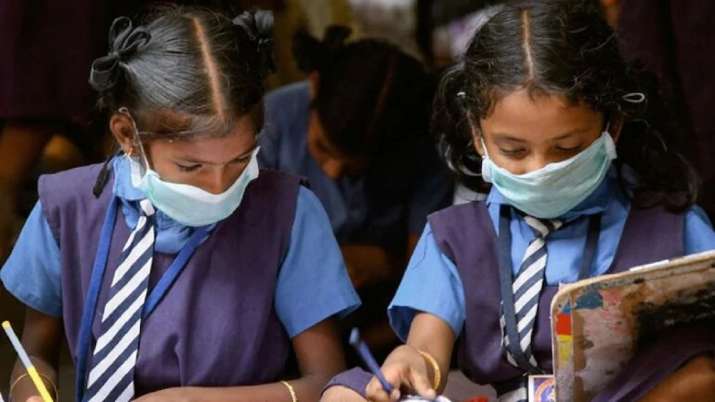NEP & Our Educational System: An Overview
Jul 8, 2022 | Shalini Rai
Congress' Jairam Ramesh added that the Prime Minister launched the "Beti Bachao Beti Padhao" scheme to great fanfare soon after coming to office in 2014. However, it has since emerged that close to 80 per cent of the scheme's budget is earmarked for advertisements (Representational Image: PTI)
On Thursday, while inaugurating a meeting on the implementation of the National Education Policy (NEP) at the Banaras Hindu University, Varanasi, PM Narendra Modi said that the educational system India inherited after independence left much to be desired and was essentially a ploy by the British to get a ‘working class’ of Indians ready for the purpose of taking up clerical jobs under the British Raj.
Modi said, “The foundation of the National Education Policy 2020 is to take education out of narrow thinking and connect it with the modern ideas of the 21st century. There has been no dearth of talent in our country. Unfortunately, we inherited a system where the meaning of education was to get a job. The British designed the education system to fulfil their needs. Things did change post-independence, but a lot left to be done. The education system created by the Britishers was never part of the Indian ethos.”
As any well-rounded observer will concur, the education system we largely follow was formulated and implemented with one aim in mind — to provide clerical labour to the ruling class to assist in its administration of the vast territory which made up British Raj in the Indian sub-continent.
There were three main agents of modern education in India: the British government, Christian missionaries and Indian intellectuals and reformers. In order to execute their vision of education for the ‘natives’, the British made use of ‘Acts’ and policies which followed the general course the top brass wanted to steer India towards.
Prominent among these were the Charter Act of 1813, Macaulay’s Minutes and Wood’s Despatch (1854). Before this, however, Governor-General Warren Hastings had established the Calcutta Madrassa in 1781 for the purpose of teaching Islamic law. A Sanskrit College was started by Jonathan Duncan in 1791 for the study of Hindu philosophy.
While on one hand the British government wanted to create a class of Indians who could assist them in the administration of land, they also wanted to implement the ‘infiltration theory’, which meant that once some upper class Indians became ‘educated’ according to British reckoning, education would trickle down to the masses.
Although there were some Englishmen who genuinely wanted to see Indians educated, the government of the day was mainly concerned about provisioning for the demand for clerks and other administrative roles in the East India Company and after 1858, for the British Raj. Also, significantly, it was cheaper to employ Indians than get Englishmen from abroad to fill these roles.
There were some jarring factors too, prime among them being the dismal state of women’s education. Since the government did not want to take on the prevalent orthodoxy, and also because women could not generally be employed as clerks, they did the bare minimum towards this. In 1911, the illiteracy rate in British India was 94%; in 1921, it was 92%. Also, technical and scientific education was ignored by the British government.
After independence, the main motive of the government of India, now made up primarily of upper class educated Indians, was to keep the country together — especially given the monumental Partition and large-scale communal riots of 1947. With the ideals of secularism, socialism and national integration enshrined in the Indian Constitution, the government of India also appointed three important commissions for suggesting educational reforms.
The University Education Commission of 1949 made valuable recommendations regarding the reorganization of courses, techniques of evaluation, media of instruction, student services and the recruitment of teachers. The Secondary Education Commission of 1952–53 focused mainly on secondary and teacher education. The Education Commission of 1964–66 made a comprehensive review of the entire field of education. It developed a national pattern for all stages of education. The commission’s report led to a resolution on a national policy for education, formally issued by the government of India in July 1968.
This policy was revised in 1986 and emphasized educational technology, ethics and national integration. A core curriculum was introduced to provide a common scheme of studies throughout the country.
The national department of education was a part of the Ministry of Human Resource Development, headed by a cabinet minister. A Central Advisory Board of Education counseled the national and state governments. There were several autonomous organizations attached to the Department of Education. The most important bodies were the All-India Council of Technical Education (1945), the University Grants Commission (1953), and the National Council of Educational Research and Training (1961).
Over the course of seven decades after Independence, the education system of India has evolved gradually yet phenomenally. From a literacy rate of 18% in 1951, we have moved up to 74% as of 2011. Currently, the education system in India hosts more than 315 million students and therefore, the NEP will have a comprehensive and long-term impact on them all.
Let’s hope this NEP, with the firm support of all stakeholders behind it, turns out to be more effective in achieving its goals, which are quite diverse from and more upright than those of the British ever were.
